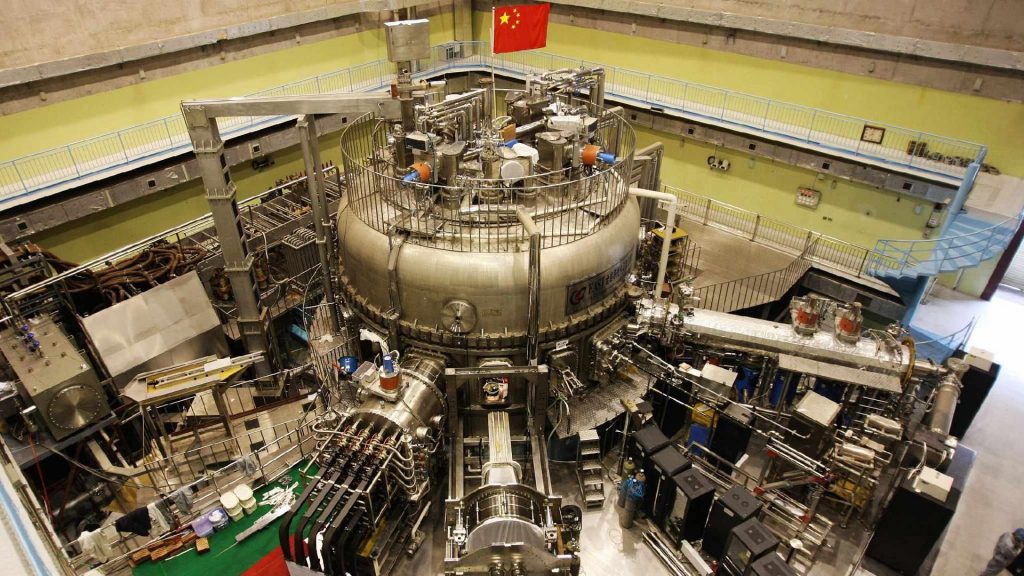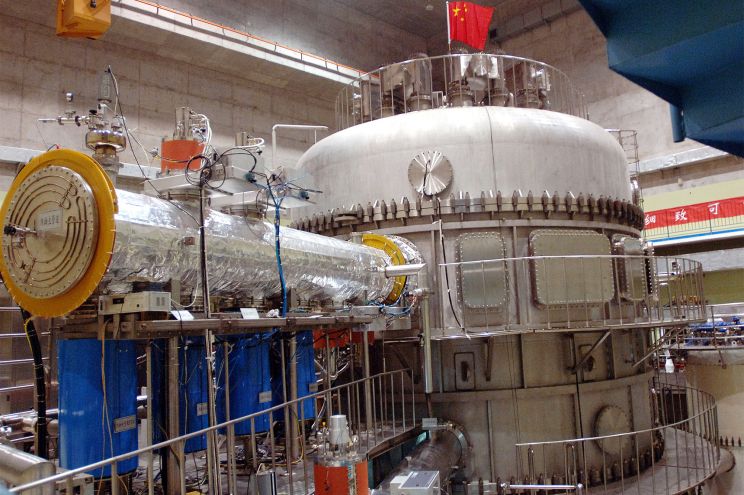In its most recent experiment, China’s “artificial sun” ran for nearly 20 minutes at a remarkable 70 million degrees Celcius — five times hotter than the natural sun.
Scientists hope that by imitating events that occur naturally inside the sun, the gadget will help harness the power of nuclear fusion, bringing humanity one step closer to providing “unlimited clean energy.”
Researchers have been busy performing tests at the Experiential Advanced Superconducting Tokamak (EAST), a nuclear fusion reactor facility, to make its auxiliary heating system more “hot” and “durable,” according to reports.

The facility is known as the “artificial sun” as it simulates the nuclear fusion reaction that powers the sun, which utilizes hydrogen and deuterium gases as fuel.
The EAST, designed by the Chinese, has been used by scientists worldwide to conduct fusion-related research since 2006. However, the project has now reached a significant milestone.
According to Chinese media sources, researchers were able to keep the “artificial sun” at 70 million degrees for as long as 1,056 seconds, or 17 minutes, 36 seconds. The center of the real sun reaches temperatures of roughly 15 million degrees.
“The recent operation lays a solid scientific and experimental foundation towards the running of a fusion reactor,” Gong Xianzu, a researcher at the Chinese Academy of Sciences’ Institute of Plasma Physics, said in a statement.

The most recent experiment at EAST, which is housed at the Hefei Institute of Physical Science in Anhui, was overseen by Gong. More than 10,000 Chinese and international scientists collaborated to bring the “artificial sun” to life.
The EAST uses tremendous heat to boil hydrogen isotopes into plasma, fusing them and releasing energy. The initiative has already cost China roughly £701 million. The most recent trial began in early December and will go until June.
“[The experiment] once again challenged the world record,” Institute of Plasma Physics director Song Yuntao said. “We have comprehensively validated the technology, driving it a major step forward from basic research to engineering applications.”

In May, EAST set a new record by running for 101 seconds at a plasma – or hot gas – temperature of 120 million degrees.
Song Yuntao, deputy head of the Hefei Institute of Physical Science’s Institute of Plasma Physics, said he wants to generate electricity by 2040.
“Five years from now, we will start to build our fusion reactor, which will need another ten years of construction. After that is built, we will construct the power generator and start generating power by around 2040.” Yuntao said.


